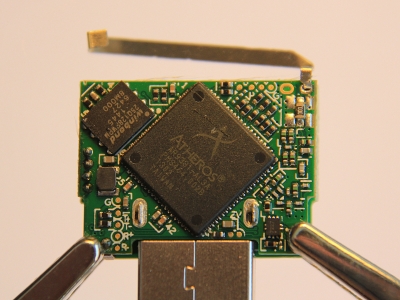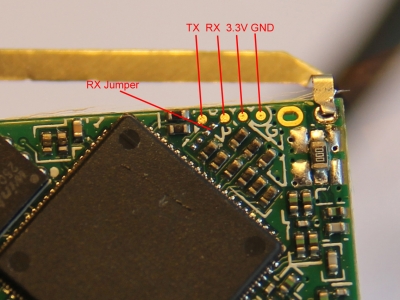During the last few weeks since my first post about the Zsun WiFi Card Reader I learned a few things that I haven’t documented yet.
After I was able to confirm that my device has indeed PCB v2 but that flashing should work just the same, I tried the simple method described here:
- Insert a FAT formatted micro SD card into the reader and plug the reader into a PC (running Windows, in my case). The card should be assigned a drive letter, say “J:”.
- Connect to the WiFi access point created by the reader.
- Open http://10.168.168.1:8080/goform/Setcardworkmode?workmode=0
- Open the drive/card in the file explorer, create a new folder named “
.update.” and copy theSD100-openwrt.tar.gzarchive into it. - Open http://10.168.168.1:8080/goform/upFirmWare – this should return status code “2”.
- Wait patiently for the described LED flashes!
- Connect to the new access point called “OpenWRT”.
- Open https://192.168.1.1/cgi-bin/luci and configure OpenWRT.
This worked like a charm (a big thanks to Warsaw!), but only 5 minutes later I managed to lock myself out with a bad WiFi config. Great. So I went ahead and soldered leads to the serial headers. But while I was able to receive and read the console output just fine I had no success sending any input to that console. Only today I learned that PCB version 2 is missing a jumper that needs to be connected in order to enable serial RX. Connecting this jumper has exceeded my meager soldering skills so far, though.
Fortunately, I learned another fact from a helpful comment on my previous post: By inserting or removing the SD card during boot, OpenWRT can be put into fail-safe mode that will reset the configuration. I kept inserting and removing it in quick succession for about 10 seconds in order to get the timing right. Now I’m able to connect to the WiFi again!
Update:
One of the images is showing an Ethernet cable attached directly to the board. This did not work for me and trying it was somewhat naive. It’s been brought to my attention that this might damage the SoC, too. If resetting an OpenWRT installation as described above is not enough, the best way to un-brick the device seems to be through the serial console as described in the comments.











